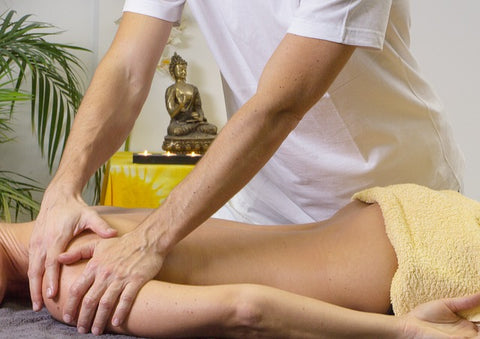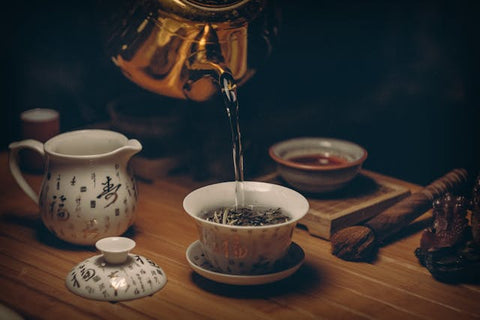- Home
- Shop
- Living
- Blog
- MIKOLITE
- SinterTech
- About
- Gallery
- Sign in
May 15, 2024
No matter how healthy you are physically and mentally, addiction is something that can grip you tightly. Having a friend who might be struggling with an addiction can be a delicate situation that requires compassion and understanding. You care about them a lot and want them to get better, but it might feel like walking on eggshells because you don’t want to jeopardize your relationship or give any unsolicited advice.
One of the most crucial steps in helping a friend who is struggling with addiction is to consider drug detox. While it can be difficult to make this suggestion, there are some compassionate ways to initiate the conversation.

A bit of empathy goes a long way when it comes to expressing your concern with a friend’s addiction. You have to approach them in a non-judgmental way while also showing empathy. Try not to speak about yourself or the situations you’ve seen others in. Understand that everyone’s struggle with addiction is unique to themselves, and it’s important that you establish yourself as a pillar of support that listens to and understands them.
It’s important to think about how you want to convey your feelings without necessarily putting any blame on your friend. Try not to be passive-aggressive or use statements that might be considered rude or counterproductive to helping your friend. Instead, express genuine concern for their well-being in a way that forms an open dialogue of trust.
A lot of people don’t really understand what an alcohol or drug detox involves. They know that it’s a positive thing that helps them overcome addiction, but they aren’t really sure of the mechanisms or techniques involved. This is why it’s important for you to do the research instead of just trying to encourage your friend to do it.
Take the time to do a bit of research on detox. Find statistics about the success rates, look for local detox programs, and build a supportive and informative environment around your friend so that they can make their own decisions. Providing information about the benefits of detox and even getting in touch with other people who have previously been to a detox program can help convince your friend to take action.
However, it’s important not to overlook any potential negatives or downsides. When something sounds too good to be true, it’s not uncommon for someone to think of it as fake or falsified. You have to be realistic about what detox can help your friend achieve, and they need to understand that it’s not a simple or easy task because the last thing you want is to trick them into joining a rehab program.
Going through a detox or rehab program can be extremely intimidating, especially for someone who has been coping with addiction for a really long time. As such, it’s a good idea to offer practical support to your friend. We’ve already mentioned doing some research on detox and rehab programs for them, but you could also make phone calls or even accompany them to their appointments. One of the biggest difficulties that people struggle with is being alone as they try to beat their addiction, so making yourself available and being there for them will make a huge difference.

It’s also important to just be with your friend as much as possible. Hang out with them, play video games, go see a movie, or invite them to eat out with other friends. Distracting them from their addiction can be a helpful way to remind them that there’s plenty of good out there in the world, and it’ll make it easier for them to finally realize the good that professional intervention can do.
Perhaps one of the worst things you can do is to pressure your friend into doing something, especially with an ultimatum. It’s natural to feel frustrated that your friend isn’t seeking the help they need. Their mental health is spiraling down before your eyes and you don’t know what to do to make things better. As such, you might find yourself making threats, giving ultimatums, and even pressuring them into doing something.
This almost never works because it could potentially turn you into an “enemy” in their eyes. You could lose any trust that you’ve built together, and they may start to avoid you because of the pressure you’re putting on them. This is extremely counterproductive and should be avoided at all costs.
May 14, 2024
Rehabilitation is a journey of healing, growth, and transformation. Whether it's recovering from a physical injury, battling addiction, or overcoming a mental health challenge, the road to recovery is often complex and requires dedication, patience, and support. In this blog post, we'll explore the various aspects of the rehabilitation process, from the initial steps to long-term maintenance, highlighting the challenges, strategies, and successes along the way.

Rehabilitation starts with recognizing the necessity for change and reaching out for assistance, marking a pivotal moment of courage and vulnerability. This initial step is often challenging, as it requires individuals to confront personal struggles and fears. However, embracing this journey opens the door to progress and healing, setting the foundation for positive transformation. By acknowledging the need for change and seeking support, individuals embark on a path of self-discovery and growth. Despite the challenges and uncertainties, this courageous decision signifies a commitment to personal well-being and resilience. It is through this acknowledgment and proactive approach that the journey of rehabilitation begins, paving the way for a brighter and healthier future.
The first stage of rehabilitation is recognizing that a change is necessary. This realization can come from various sources, such as experiencing a crisis, receiving feedback from loved ones, or reaching a personal breaking point. It's a pivotal moment that sets the tone for the entire journey.
Once the need for change is acknowledged, the next step is reaching out for support. This can involve seeking professional help from doctors, therapists, or rehabilitation specialists, as experts from Detox California explain. It may also include joining support groups, connecting with peers who have similar experiences, or involving family members in the process.
Rehabilitation is not without its challenges. It requires commitment, resilience, and a willingness to confront obstacles along the way. Some common challenges faced during the rehabilitation process include:
For individuals recovering from physical injuries or surgeries, rehabilitation often involves overcoming physical limitations. This can include regaining strength, mobility, and coordination through exercises, therapies, and adaptive techniques.
Rehabilitation also encompasses emotional and psychological healing. Those recovering from addiction may face cravings, triggers, and emotional upheavals. Similarly, individuals dealing with mental health issues may confront anxiety, depression, or trauma-related symptoms.
Making lifestyle adjustments is another aspect of the rehabilitation process. This can include adopting healthier habits, such as improving diet and exercise routines, managing stress effectively, and establishing supportive social networks.
While the road to recovery may be challenging, some strategies and approaches can enhance success and facilitate progress. These strategies include:
Setting realistic and achievable goals is essential in rehabilitation. Breaking down larger objectives into smaller, manageable steps can provide a sense of accomplishment and motivation along the way.
Having a strong support network is crucial during rehabilitation. This network may include healthcare professionals, family members, friends, and support groups. Surrounding oneself with positive influences and encouragement can foster resilience and motivation.
Self-care plays a vital role in rehabilitation. This involves prioritizing physical, emotional, and mental well-being through activities such as exercise, meditation, hobbies, and relaxation techniques.
Throughout the rehabilitation journey, it's important to celebrate milestones and acknowledge progress. Whether it's completing a therapy session, reaching a fitness goal, or experiencing moments of clarity and peace, recognizing achievements can boost confidence and motivation.
Rehabilitation is not a finite process but rather a lifelong journey of growth and self-discovery. Long-term maintenance involves sustaining progress, preventing relapse, and continuing to evolve and adapt to new challenges. Some key aspects of long-term maintenance include:
Consistency and persistence are key factors in maintaining progress. Continuing with therapy, practicing healthy habits, and staying connected with support systems can contribute to long-term success.
Setbacks are a natural part of the rehabilitation process. Instead of viewing them as failures, it's important to see setbacks as opportunities for learning and growth. Reflecting on challenges, identifying triggers, and adjusting strategies can lead to renewed resilience and determination.
As individuals progress in their rehabilitation journey, they may encounter new challenges or changes in circumstances. Embracing change and adapting strategies accordingly is essential for ongoing success and personal growth.

The road to recovery is a transformative journey that requires courage, resilience, and perseverance. By acknowledging the need for change, seeking support, confronting challenges, and embracing growth, individuals can navigate the rehabilitation process with strength and determination. Celebrating milestones, practicing self-care, and maintaining long-term strategies contribute to a fulfilling and sustainable recovery journey. Ultimately, rehabilitation is not just about overcoming obstacles but also about rediscovering resilience, reclaiming personal agency, and embracing a renewed sense of purpose and well-being.
May 11, 2024
Digestive health disorders can significantly impact our daily lives, from discomfort and inconvenience to serious health complications. Navigating these disorders requires a comprehensive understanding of their causes, symptoms, and available solutions. Whether you're dealing with common issues like indigestion or more complex conditions like irritable bowel syndrome (IBS) or Crohn's disease, having a roadmap to manage these challenges is essential. In this ultimate guide, we delve into the intricacies of digestive health disorders, offering insights into their management and treatment options to help you regain control of your digestive system and overall well-being.

The digestive system comprises a sophisticated array of organs tasked with the breakdown of food, absorption of nutrients, and disposal of waste. However, various factors such as diet, stress, genetics, and underlying medical conditions can disrupt this delicate balance, leading to digestive disorders. These disorders encompass a wide range of conditions, including acid reflux, gastritis, inflammatory bowel disease (IBD), and celiac disease, each with its unique set of symptoms and challenges. Understanding the underlying mechanisms of these disorders is crucial for effective management and treatment.
While medication can provide symptomatic relief for many digestive disorders, adopting a holistic approach to digestive health can yield long-term benefits. Diet plays a pivotal role in managing digestive disorders, with certain foods exacerbating symptoms while others can provide relief. Incorporating fiber-rich foods, probiotics, and anti-inflammatory ingredients into your diet can promote gut health and alleviate symptoms of conditions like IBS and GERD. Additionally, lifestyle modifications such as stress management techniques, regular exercise, and adequate hydration can complement dietary changes and support overall digestive well-being.
Despite our best efforts, managing digestive health disorders may require professional intervention. Gastroenterologists specialize in diagnosing and treating digestive disorders, utilizing a range of diagnostic tests such as endoscopy, colonoscopy, and imaging studies to pinpoint underlying issues. Depending on the diagnosis, treatment options may include prescription medications, dietary supplements, or surgical interventions. Integrative approaches, combining conventional medicine with alternative therapies like acupuncture or herbal remedies, can also be explored under the guidance of qualified healthcare providers.
Consulting with a stomach doctor, also known as a gastroenterologist, is a crucial step in navigating treatment options for digestive health disorders. These specialists possess in-depth knowledge and expertise in diagnosing and managing a wide range of gastrointestinal conditions. During your consultation, the stomach doctor will conduct a thorough evaluation of your medical history, symptoms, and any diagnostic tests previously performed. Based on this assessment, they will develop a personalized treatment plan tailored to address your specific needs and concerns. Whether it involves medication management, dietary modifications, or further diagnostic testing, collaborating with a stomach doctor ensures comprehensive and effective care for your digestive health needs. Additionally, they can provide invaluable guidance and support throughout your treatment journey, empowering you to make informed decisions and achieve optimal digestive wellness.
Diet plays a crucial role in managing digestive health disorders, and exploring dietary solutions can offer significant relief from symptoms. For individuals with conditions like IBS or GERD, identifying trigger foods and making strategic dietary adjustments can alleviate discomfort and improve quality of life. Keeping a food diary can help track symptoms and pinpoint specific foods that exacerbate digestive issues. Additionally, working with a registered dietitian can provide personalized guidance on creating a well-balanced diet that supports digestive health. Incorporating fiber-rich fruits and vegetables, lean proteins, and whole grains while limiting processed foods and high-fat meals can promote regularity and reduce gastrointestinal distress.
In addition to dietary changes, embracing lifestyle modifications can play a pivotal role in managing digestive health disorders. Stress is a known trigger for many gastrointestinal conditions, so incorporating stress-reduction techniques such as mindfulness, yoga, or meditation can help alleviate symptoms. Regular exercise can also promote healthy digestion by stimulating bowel movements and reducing bloating. Ensuring adequate hydration is essential for maintaining proper digestive function, as water helps soften stool and prevent constipation. By prioritizing self-care and adopting healthy lifestyle habits, individuals can support their digestive system and minimize the impact of gastrointestinal disorders on their daily lives.

In addition to conventional medical treatments, supportive therapies and alternative treatments can complement the management of digestive health disorders. Acupuncture, an ancient Chinese therapy, has been shown to alleviate symptoms of conditions like IBS and acid reflux by restoring balance to the body's energy flow. Herbal remedies such as peppermint oil, ginger, and chamomile can also provide relief from digestive discomfort when used under the guidance of a qualified healthcare provider. Additionally, mind-body therapies like hypnotherapy and cognitive-behavioral therapy (CBT) have shown promise in reducing symptoms of IBS and other functional gastrointestinal disorders by addressing the interconnectedness of the gut-brain axis. Exploring these alternative treatments in conjunction with traditional medical approaches can offer a holistic approach to managing digestive health disorders and improving overall well-being.
While managing the symptoms of digestive health disorders is crucial, maintaining long-term digestive health requires ongoing vigilance and care. Regular monitoring and follow-up with your healthcare provider, including annual check-ups and screenings, can help detect any changes or complications early on. It's also essential to stay informed about new developments in digestive health research and treatment options, as advancements in medical science may offer additional avenues for managing your condition. Additionally, cultivating a supportive network of friends, family, and healthcare professionals can provide invaluable emotional support and encouragement on your journey to digestive wellness. By prioritizing proactive measures and staying engaged in your healthcare, you can ensure that your digestive system remains healthy and functioning optimally for years to come.
Navigating digestive health disorders requires a multifaceted approach that encompasses understanding the underlying causes, adopting holistic lifestyle changes, seeking professional guidance, exploring dietary solutions, embracing lifestyle modifications, and considering supportive therapies and alternative treatments. By empowering yourself with knowledge and implementing proactive strategies, you can effectively manage digestive disorders and improve your overall quality of life. Remember, each individual's journey to digestive wellness is unique, so don't hesitate to explore various options until you find what works best for you. With dedication, support, and informed decision-making, you can take control of your digestive health and enjoy a happier, healthier life.
May 07, 2024

Do not underestimate the power of color whether it is derived from a spiritual interpretation or psychological. There is a science behind it, and you see it affecting you every day whether you realize it or not. Big companies use it as a branding technique to elicit certain feelings from you about them.
What comes to mind when you think about the color green? Nature? Wildlife? Healthy? Organic products? Wholefoods....? Wooo....did I get you there?
Whether it is dark green light green, variegated greens, all these colors are to evoke a feeling of relaxation, peace, and harmony.
Well as you would have thought already, it is a calm color that symbolizes the natural world. It often represents tranquility, good luck, health, jealousy, refreshment, universal love, rest, environmental awareness, reassurance, restoration, peace, and equilibrium.
Green represents growth, the color of spring, renewal, and rebirth. In the modern world, it restores depleted energy, equalizes stress, and gives us a sense of well being.
The emotionally positive color of green gives us the ability to love and nurture ourselves as well as others. People who are drawn to green are generally natural peacemakers. Careful, these type of people tend to be associated with boredom and must avoid becoming a martyr.

As we briefly mentioned above how the "green" association wholefoods link our minds to natural, healthy and safe. Other companies use it as well. Think about our popular coffee brand Starbucks.
The green color palate of Starbucks represents growth, freshness, uniqueness, and prosperity. Starbucks not only utilizes green in their logo but also throughout its stores combined with the wood feel to promote relaxation.
Companies such as BP oil, Ameritrade, Godaddy, Evernote, and Spotify just to name a few.
You will will also find the color green for servicemen and veterans. The reason is that the color green represents hope, renewal and well-being which is a way to honor these men and women. And is also why they have metals and pins on their uniform. In civilian society we create custom lapel pins to show support for these brave and hard-working men and women. People can make it visible to the outside world by customizing a green pin with a custom tribute to veterans on it. It is a way to show any veteran who sees your pin that you are giving support, encouragement, and appreciation.
What are people with green psychology like?
There are pros and cons to people who are "more green", but this applies to all colors. We just aren't perfect people.
Green people generally represent:

Growth and vitality, very self-reliant, reliable, and dependable. These people are calm and tactful with a high EQ. Earnest and intelligent and are big nature lovers and very family-oriented.
They are great at creating social clubs, organizations or foundations due to a need for belonging. People tend to listen cause they are compassionate and nurturing, generous, kind and loyal with a high moral sense.
On the flip side, these people can be possessive and over-cautious which sometimes turns into jealousy or envy. They can be selfish, greedy and devious with money. Green personalities need to be aware to be more considerate of others and careful not to fall on the dark side of the green personality.
Green personality people are great listeners and have a caring heart. Counselors, social workers, and charity organizations are all top list occupations for green personalities. And they are the best neighbors and parents because of how helpful and nurturing their personalities are.
They tend to be terrific leaders because they encompass mental clarity and optimism with calm emotions. Their generosity of spirit and inspiration will encourage others to follow their dreams to "do the right thing".
And the personality is fueled with stability and endurance, giving them the persistence to cope with adversity.
Green represents prosperity and abundance, of finance and material wealth. In the business world, real estate is where they would thrive in. As their business prospers, their possessiveness will feel the need to own people and things. This comes with all their success, so one must be careful to always stay grounded.
How true do you find this relating to you if your color is green?
Emerald green braceletOr you can find out if black is more your personality color.
If you aren't sure what color you are, going through zodiac colors may help you identify your personality and better understand your unconscious thoughts.
April 30, 2024
Shoulder pain is a common ailment that can significantly impact daily life, making simple tasks seem daunting. Whether it's due to an injury, overuse, or even just the wear and tear of daily life, the discomfort can be a major hurdle. However, there's good news! With the right approach, managing and bidding farewell to shoulder pain is within reach. In this blog, we'll explore actionable tips and tricks designed to nurture your shoulder back to its optimum health. From exercises that strengthen and stretch to lifestyle adjustments and ergonomic considerations, we're here to guide you on a path to a happy, healthy joint. Say goodbye to the discomfort and limitations of shoulder pain—read on to discover how to reclaim your comfort and mobility.

Before jumping into any self-administered treatments or exercises, the first and most crucial step in addressing shoulder pain is to get a professional evaluation. Consulting with a shoulder doctor or an orthopedic specialist can provide you with a clear diagnosis and a tailored treatment plan. These experts can pinpoint the exact cause of your discomfort, and prescribe shoulder pain treatment that is suited to your unique needs. They may also recommend imaging tests such as X-rays or an MRI to get a better understanding of the condition and severity of your shoulder pain.
Once you have a better understanding of your shoulder pain, it's time to start working on improving its strength and flexibility. Simple stretching exercises can help alleviate stiffness and discomfort in the joint. These may include arm circles, cross-body stretches, and shoulder rolls. Additionally, targeted strengthening exercises can help improve the stability of your shoulder joint and reduce the risk of future injuries. Some recommended exercises for shoulder pain include lateral raises, bicep curls, and rotator cuff exercises. It's important to consult with your doctor or a physical therapist before starting any new exercise regimen to ensure you are doing them correctly and safely.
Activities that involve constant shoulder movement, especially those that are high-impact or involve awkward positions, can strain the shoulder muscles and tendons over time. To prevent this, it's crucial to incorporate variety into your physical activities and ensure you're not overloading your shoulders.
For individuals who work at computers or engage in sports that heavily rely on shoulder movement, taking regular breaks to stretch and changing your position frequently can be beneficial. Additionally, practicing proper technique in both work and sports activities can significantly reduce the risk of shoulder injuries. Listening to your body and giving it time to rest and recover after heavy use is key to maintaining long-term shoulder health and preventing the recurrence of pain.
Creating an ergonomic environment is essential in preventing and managing shoulder pain, especially for those spending long hours at a desk or engaged in repetitive motions. Paying close attention to the setup of your workspace can have a substantial impact on reducing strain on your shoulders. Ensure that your chair and desk are at proper heights so that your arms can rest comfortably at a 90-degree angle while typing.
The monitor should be at eye level to avoid hunching forward. For those who use the phone frequently, consider using a headset to prevent the neck and shoulder strain associated with cradling the phone between your head and shoulder. Making these small but significant adjustments in your daily work and living environments can vastly improve shoulder health and contribute to overall well-being.

An often overlooked but critical component of shoulder pain management is incorporating adequate rest and recovery into your routine. Rest plays a vital role in the healing process, allowing your muscles and tendons the time they need to repair. Incorporating “active rest” days, where you engage in low-impact activities such as walking or yoga, can prevent stiffness without overburdening the shoulder.
Additionally, applying ice to the affected area for 15-20 minutes several times a day can help reduce inflammation and pain. For those experiencing persistent discomfort, heat therapy might be beneficial after the initial swelling has subsided, as it can improve blood flow and relax tight muscles.
Sleep is another crucial element of recovery. Ensuring you have a comfortable, supportive mattress and pillow can significantly impact the quality of your shoulder’s recovery time. Sleeping on your back or the unaffected side, with a pillow to support the injured shoulder, can also help alleviate pain and prevent further injury during the night.
Lastly, it is important to manage your activities, even after symptoms begin to improve, to avoid a recurrence of injury. Gradually increasing the intensity and duration of exercises, and continuing with the ergonomic practices and stretches that support shoulder health, are essential steps to maintain a pain-free lifestyle.
Stress can exacerbate physical discomfort and contribute to muscle tension, particularly around the neck and shoulder areas. Hence, adopting stress management techniques can be instrumental in alleviating shoulder pain. Techniques such as deep breathing exercises, meditation, and mindfulness can not only reduce stress levels but also minimize the tension that accumulates in the shoulder region.
Incorporating regular relaxation practices into your daily routine can help in keeping both your mind and body calm and balanced. Additionally, engaging in enjoyable activities that distract from stressors, such as hobbies or spending time in nature, can further aid in reducing overall tension. It's important to recognize the role of emotional well-being in physical health and to take holistic steps toward managing stress and tension as part of your shoulder pain recovery plan.
Shoulder pain can be a debilitating condition, but it is not one that you have to live with forever. With the right diagnosis, exercises, and lifestyle adjustments, you can take control of your shoulder health and say goodbye to discomfort and limitations. Remember to consult with a medical professional, gradually introduce new exercises and activities, incorporate rest and recovery strategies, pay attention to ergonomics and stress management, and listen to your body. Here's to a happy and healthy shoulder joint!
April 29, 2024
If you are trying to take a more holistic approach to your health, then you may recognize that it’s not just about your physical health, your mind deserves to be a higher priority, as well. When we think of mental health, we typically think of mood, mindset, and the like, but how often do you think of cognitive health? Have you looked at the ways that you might be able to improve how your brain works, improving memory, attention span, concentration, and creativity? If not, then it’s worth looking into the tips below.

Eat your greens
It might sound like the oldest trick in the book, telling you that eating vegetables can help give you the brain of a genius. While the impact might not be quite that profound, it is true that certain vegetables, grains, and other foods come rich in the ingredients that are vital for your brain health, such as vitamin K, folate, and beta-carotene. In fact, foods that rely primarily on meats, like paleo diets, suffer from a lack of these vitamins, which can lead to feelings of mental dullness. Take a look at some of the foods linked to better brainpower to see which you can fit into your diet more easily. Vitamins in food tend to be much more bio-available, making it easier for your body to absorb compared to synthetics.
Look into the power of nootropics
A topic that has been trending as of late, nootropics are substances that can improve cognitive function and brain performance, commonly known as smart drugs. There are many prescription nootropics, like Adderall, that have very specific and strong impacts on cognitive function, but there are also compounds and ingredients like the Nootropics selection that can be used in supplements. While this is a relatively new field of research, there are real benefits found in many of these ingredients that can support memory and learning and do things like improve alpha wave activity in the brain, which can lead to improved creativity. Research the different nootropics to see which might be able to suit your own needs.
Exercise your mind
It would be incorrect to say that the brain is a muscle that needs to be worked out. However, it is true that challenging your mind, especially in certain areas, can help you improve your brain function in those areas. You should attempt to keep a varied and wide workout range for your brain. For instance, learning new skills, especially new languages, can have a huge range of benefits, improving your memory and ability to absorb new information and concepts much better. Similarly, listening to or trying to make music has been shown to improve functions in the part of the brain that are related to memory, emotion, and movement. Other ways to exercise your brain include doing puzzles, engaging in conversation, and even traveling. Live a broad, fulfilling life and your brain will thank you.
Don’t underestimate the power of the tips above to improve your cognitive health. The difference between an engaged and active brain versus one that has been left to stagnate can be staggering, to put it lightly.
April 16, 2024 19 Comments
The color black often carries a negative connotation, frequently linked to darkness, mystery, or grimness. However, despite these associations, black remains an incredibly popular color. In fact, when it comes to psychology, choosing black can signify positive traits.
Yet, it's still a very popular color! (If you call it a color) In terms of psychology, choosing the color black is not a bad trait.
Consider this: black is often perceived as sexy and sophisticated! It conveys a sense of elegance, power, and authority, making it a preferred choice for many individuals in high-status positions. Whether in fashion, design, or personal branding, black exudes confidence and allure.
There is a profound psychological interpretation to colors and their impact on the human brain. Colors influence our emotions, perceptions, and even our decisions. For instance, black can create a sense of formality and prestige, which is why it's commonly used in business attire and luxury products.
Color schemes are deeply embedded in our culture and psychology, with each color eliciting specific ideas and feelings. For many people, understanding how colors affect their mood and behavior is nothing new. By recognizing the power of colors, individuals can harness these insights to enhance their personal and professional lives.
For many, color schemes being associated with various ideas, feelings, and even decisions are nothing new. However, when you just start studying psychology in college, you get snowed under such facts and theories, and even more, you need to write essays on them. To finish this struggle and get your papers done on time, we recommend hiring professional editors, from essay writing service by SmartWritingService. Students from around the world address their writers for help, and get done with their psychology papers on time. Exploring the psychological effects of colors can provide valuable insights into your personality and preferences, helping you make more informed choices in various aspects of your life.

In this article, we are going to focus on the color black.
The main personality trait of those who choose black as their color tends to enjoy prestige and power as well. These people are often artistic and sensitive. But very independent and strong-willed individuals that like to be in control of themselves and their surroundings. While these people aren't introverts, they are careful with the details of their lives and do not share easily with others to avoid showing weakness.
The sexy trait about people with this type of personality is that they want to give the appearance of mystery, but their preference may also indicate a suppression of desires and worldly aims, suggesting hidden depths and inner longings.
This is trait usually comes with a sense of style as well. Think of your men in black or women in suits. Usually by high ranking executives or business people. It is confident, professional and is suitable in many settings.

To achieve a balanced life, it's essential to incorporate a variety of "colors" that counterbalance your weaknesses and enrich your experiences.
Having a black color personality signifies non-emotional traits, projecting an image of a dignified and sophisticated individual who is in complete control. This personality is often associated with high-powered career roles such as corporate executives, top attorneys, club owners, actors, actresses, and entrepreneurs. These individuals tend to keep others at arm's length, guarding their emotions and creating an impenetrable barrier between themselves and others.
People with a black color personality possess the drive and determination to achieve significant success, yet they continuously seek more for a sense of fulfillment. Despite their accomplishments and material gains, they often experience a sense of emptiness, prompting an ongoing search for personal meaning and self-discovery.
By understanding the attributes of a black color personality and recognizing the need for balance, individuals can strive to introduce other elements into their lives. This approach not only mitigates weaknesses but also leads to a more fulfilling and harmonious existence.

People envy the status, lifestyle, and possessions of those with a black color personality. They thrive on the attention they receive, yet there is often a persistent feeling that something is missing from their lives. To achieve a more balanced and fulfilling existence, it's essential for individuals with this dominant trait to surround themselves with people who embody other vibrant and diverse colors. This diversity can help offset their inherent tendencies and introduce new perspectives and experiences into their lives.
It's important to remember that while black may be their dominant personality trait, it doesn't define them entirely. Everyone is a complex blend of various traits and characteristics, and understanding this can help in seeking balance and fulfillment.
Is black your color personality? Or do you identify more with another hue? Exploring your color personality can provide valuable insights into your strengths, weaknesses, and the best ways to achieve a harmonious and satisfying life. Whether you lean towards black or another color, recognizing and embracing the full spectrum of your personality can lead to personal growth and a more enriched life.
Maybe your personality is more white? Why not take a look and see if white is more fitting. Or are you more colorful such as purple?
April 15, 2024
In today's world, where personal appearance and self-confidence are closely intertwined, concerns about facial aesthetics often take center stage in people's minds. Among these, the presence of a double chin can be a significant source of distress for many. This aesthetic concern, characterized by excess fat beneath the chin, can affect individuals of all ages and body types, often resisting even the most dedicated diet and exercise routines. In "Beauty Reimagined: Effective Solutions to Get Rid of a Double Chin," we explore the myriad of ways, both traditional and innovative, that aim to refine the jawline and restore the facial contours that can be pivotal in enhancing one's appearance and boosting confidence. From lifestyle changes and exercises specifically targeting the area, to medical procedures and groundbreaking technologies, our guide is designed to offer insights and solutions that cater to a wide range of needs and preferences.

Adopting healthier lifestyle habits can significantly impact the appearance of a double chin. Weight loss through a balanced diet and regular exercise often leads to a reduction in body fat, including the area under the chin. Focusing on whole foods, staying hydrated, and avoiding processed foods can contribute to an overall slimmer profile and a more defined jawline. Additionally, incorporating specific nutritional strategies such as increasing protein intake and reducing sugar and salt consumption can further enhance facial contours and support the achievement of a sharper jawline. Engaging in regular physical activity not only contributes to weight loss but also improves circulation and overall health, indirectly benefiting the skin's appearance and firmness.
There are specific exercises designed to target the neck and chin area that may help in tightening the skin and reducing the appearance of a double chin. Exercises such as ball squeezes, neck stretches, and chin lifts can be performed daily as part of a routine to strengthen the muscles around the neck and improve the area's appearance. These exercises are simple yet effective and can be easily incorporated into your daily routine without the need for special equipment. Regularly practicing these exercises can lead to noticeable improvements, making the skin around the neck and chin look firmer and more toned. This, combined with overall physical fitness, can significantly contribute to reducing the prominence of a double chin.
For those seeking faster and more pronounced results, cosmetic procedures such as liposuction, laser treatments, and mesotherapy offer targeted solutions to eliminate fat under the chin. These procedures, performed by qualified professionals, can contour the jawline and reduce the appearance of a double chin with lasting effects. Advances in technology have made these procedures safer and more effective, providing patients with a variety of options tailored to their needs and recovery preferences. Whether opting for minimally invasive techniques or more traditional surgical methods, individuals can achieve significant improvements in the definition of their jawline, often with minimal downtime and discomfort.
Non-invasive treatments have gained popularity for those who wish to avoid surgery. Options like cryo-lipolysis (fat freezing), ultrasound fat reduction, and radiofrequency treatments are designed to reduce submental fat without the need for incisions or extended downtime, offering a convenient alternative to traditional methods. Additionally, CoolSculpting, specifically designed for fixing a double chin, offers a non-surgical approach to reshaping the contour of the neck and jawline by freezing away unwanted fat cells. These treatments work by targeting fat cells under the chin and neck, gradually reducing their size and resulting in a more defined jawline. With advancements in non-invasive technologies, patients can enjoy noticeable improvements without the risks associated with surgery. These treatments often require multiple sessions for optimal results, making them a flexible option for individuals leading busy lives.
Incorporating firming and lifting skincare products into your daily routine can also aid in the battle against a double chin. Products containing ingredients like retinol, peptides, and collagen can improve skin elasticity and firmness, subtly enhancing the jawline's appearance over time. Dedicated skincare routines focusing on hydration and targeted treatments can strengthen the skin’s structure, providing a more youthful and toned appearance. Regular use of these products, in conjunction with facial massage techniques, can optimize skin health and contribute to a visibly more defined chin and neck area. This approach is particularly beneficial for those looking to complement physical exercises and dietary changes with external skin care.
Improving posture can have an immediate effect on the appearance of a double chin. Sitting up straight and keeping your chin up can not only reduce the look of a double chin but also strengthen the muscles in your neck and jaw, leading to more lasting changes. Good posture aligns the spine and neck, naturally pulling in the chin and tightening the area. This can significantly reduce the sagging of skin under the chin which contributes to a double chin appearance. Regularly practicing posture-improving exercises and being mindful of your posture throughout the day can enhance the effectiveness of other treatments and exercises aimed at reducing a double chin.
Understanding that each individual’s body responds differently to various treatments is crucial in finding the most effective solution for a double chin. Consulting with professionals to discuss goals and expectations can help tailor a personalized approach that combines lifestyle adjustments, exercises, and possibly medical treatments for optimal results. A comprehensive plan that addresses both the causes and symptoms of a double chin can lead to more effective and lasting improvements. Professionals can offer guidance on the most suitable combination of diet, exercise, cosmetic procedures, or non-invasive treatments based on individual needs and conditions, ensuring that each person receives the most effective strategy for achieving a defined jawline.

The quest to mitigate the appearance of a double chin encompasses a variety of approaches, from lifestyle adjustments and targeted exercises to cutting-edge cosmetic procedures and skincare innovations. Each method offers its own benefits and, when selected according to individual preferences, goals, and conditions, can contribute significantly to enhancing the jawline's contour. It's essential to remember that the effectiveness of these strategies can vary from person to person, and patience, along with a tailored, multifaceted approach, often yields the best results. By combining healthy habits, dedicated care, and professional advice, individuals can achieve a more defined jawline, enhancing their confidence and contributing to their overall well-being. Above all, the journey to improving one’s appearance should be guided by self-love and a positive outlook, recognizing that true beauty emanates from both within and without.
April 13, 2024
Pain is a universal human experience. Whether it's a headache, backache, or emotional pain, we all seek relief from discomfort. However, the journey to pain relief is often riddled with common mistakes that can prolong suffering or even exacerbate the problem. In this blog post, we'll explore some of these pitfalls and offer insights into how to navigate them effectively.

One of the most common mistakes people make when trying to relieve pain is ignoring the underlying cause. Pain is often a symptom of an underlying issue, such as an injury, inflammation, or poor lifestyle habits, professionals from Pain Ends Here explain. Simply masking the pain with medication or temporary remedies without addressing the root cause can lead to recurring or chronic pain.
For example, someone experiencing frequent headaches may resort to painkillers without considering factors like dehydration, poor posture, or stress. By identifying and addressing the root cause, such as increasing water intake, improving posture, or practicing stress management techniques, long-term relief can be achieved.
While medications can provide temporary relief from pain, overreliance on them can have detrimental effects. Long-term use of painkillers, especially opioids, can lead to dependency, tolerance, and even addiction. Additionally, some medications may only mask symptoms without addressing the underlying cause, leading to a cycle of dependency.
Instead of solely relying on medication, it's essential to explore alternative therapies and lifestyle changes that can complement treatment. These may include physical therapy, acupuncture, chiropractic care, mindfulness practices, and dietary adjustments. Integrating a holistic approach to pain management can reduce the need for excessive medication and promote overall well-being.
When experiencing pain, the instinctive response for many is to rest and avoid physical activity. While rest is crucial for recovery, prolonged inactivity can lead to muscle weakness, stiffness, and reduced mobility, ultimately exacerbating pain in the long run.
Engaging in appropriate physical activity and exercise under the guidance of healthcare professionals can promote healing, improve flexibility and strength, and release endorphins, the body's natural painkillers. It's essential to strike a balance between rest and activity, incorporating gentle exercises tailored to individual needs and limitations.
Pain is not solely physical; it can also have emotional, psychological, and social dimensions. Neglecting these aspects can hinder overall pain management efforts. Chronic pain, in particular, can lead to depression, anxiety, social isolation, and decreased quality of life.
Addressing the emotional and psychological components of pain through therapy, counseling, support groups, and stress management techniques is crucial for comprehensive pain relief. Developing coping strategies, improving resilience, and fostering social connections can positively impact both physical and emotional well-being.
In today's fast-paced world, we often expect instant solutions to our problems, including pain relief. However, effective pain management requires patience, consistency, and a multifaceted approach. Quick-fix solutions or expecting immediate results can lead to frustration and disappointment.
It's important to set realistic expectations and commit to a long-term pain management plan. This may involve trial and error, adjustments to treatment strategies, and ongoing communication with healthcare providers. Celebrating small victories along the way and staying motivated despite setbacks can contribute to sustainable pain relief outcomes.
Disregarding self-care practices is a common mistake that can significantly impact pain management efforts. Many individuals underestimate the importance of self-care in promoting overall well-being and reducing pain. Poor sleep quality not only affects energy levels but also contributes to increased sensitivity to pain. Similarly, unhealthy eating habits can lead to inflammation and worsen existing pain conditions.
Lack of physical activity not only weakens muscles but also affects joint health and mobility, leading to increased pain and stiffness. Moreover, high stress levels can exacerbate pain by triggering muscle tension and inflammation responses in the body.
Incorporating self-care practices such as prioritizing adequate sleep, maintaining a nutritious diet rich in anti-inflammatory foods, engaging in regular exercise tailored to individual abilities, practicing relaxation techniques like deep breathing or meditation, and pursuing hobbies that bring joy and fulfillment can significantly support pain management efforts. Taking time for oneself, prioritizing mental and physical health, and seeking support when needed are essential components of a holistic approach to pain relief.

Navigating the journey to pain relief requires awareness, education, and a multifaceted approach that addresses the root cause incorporates holistic therapies, considers emotional well-being, sets realistic expectations, and prioritizes self-care. By avoiding common mistakes such as ignoring the underlying cause, overreliance on medication, neglecting physical activity, overlooking emotional aspects, expecting instant results, and disregarding self-care practices, individuals can enhance their pain management outcomes and improve their overall quality of life.
April 12, 2024
Injuries are an inevitable part of life, ranging from minor accidents to more severe traumas, each leaving a unique imprint on physical, emotional, and social well-being. While the immediate focus often revolves around physical recovery, the influence of injuries extends far beyond the surface, affecting various aspects of life. Understanding the holistic impact of injuries is crucial for effective management and comprehensive healing. This article explores six ways injuries influence overall health and wellness, from the physical toll to legal considerations and the importance of support systems.

When an injury occurs, the immediate focus is often on addressing the physical damage. Whether it's a sprained ankle, a broken bone, or a muscle tear, the body undergoes a period of healing and rehabilitation. However, even after the physical symptoms have subsided, the effects can linger. Chronic pain, reduced mobility, and decreased function in the injured area are common consequences. These physical limitations can impede daily activities, affect performance in work or recreational pursuits, and lead to frustration and feelings of inadequacy. Moreover, compensating for the injured body part can place strain on other muscles and joints, potentially leading to secondary injuries or long-term issues if not addressed promptly. Thus, prioritizing proper rehabilitation and ongoing physical therapy is essential to minimize the long-term impact of injuries on physical health.
Beyond the individual, injuries can also impact broader aspects of life, including relationships and lifestyle choices. The need for assistance with daily tasks or mobility may strain relationships with loved ones, leading to tension and resentment. Moreover, the inability to participate in social activities or fulfill familial responsibilities can disrupt established routines and dynamics. Adjusting to these changes may require open communication, patience, and empathy from all parties involved. Additionally, injuries can necessitate modifications to lifestyle habits, such as diet and exercise. Maintaining a healthy lifestyle is essential for optimal recovery and overall well-being. Finding alternative forms of exercise that accommodate physical limitations and prioritizing nutritious foods can support the body's healing process and promote long-term health. By recognizing the multifaceted impact of injuries and taking proactive steps to address them, individuals can optimize their recovery and regain a sense of balance and wellness in their lives.
In addition to the physical and emotional challenges of recovering from an injury, there may also be legal considerations to contend with, especially in cases of negligence or liability. Personal injury lawyers specialize in advocating for individuals who have been injured due to the negligence or wrongdoing of others. As explained by experts from Bradley Law Personal Injury Lawyers, they can provide valuable guidance and support throughout the legal process, helping you understand your rights and options for seeking compensation. Whether it's negotiating with insurance companies or representing you in court, personal injury lawyers can alleviate some of the stress and burden associated with pursuing legal action. By seeking legal assistance, you can focus on your recovery while ensuring that your rights are protected and justice is served. Remember, you don't have to face the complexities of legal proceedings alone—personal injury lawyers are here to advocate for you every step of the way.
Effective rehabilitation and recovery strategies are essential components of healing from injuries. Physical therapy, occupational therapy, and other rehabilitative interventions can help restore mobility, strength, and function in the injured area. These therapies are tailored to individual needs and may include exercises, manual techniques, and assistive devices to facilitate healing and improve overall well-being. Additionally, incorporating complementary therapies such as acupuncture, massage therapy, or chiropractic care can provide pain relief and promote relaxation during the recovery process. It's important to work closely with healthcare professionals to develop a comprehensive rehabilitation plan that addresses both the physical and emotional aspects of recovery. By actively participating in rehabilitation programs and following medical advice, you can expedite the healing process and minimize the long-term impact of injuries on your health and quality of life.

While injuries are often unavoidable, there are preventive measures and risk-reduction strategies that individuals can implement to minimize their likelihood. Maintaining a healthy lifestyle, including regular exercise, proper nutrition, and adequate rest, can strengthen the body and improve resilience to injury. Wearing protective gear during sports and physical activities can also reduce the risk of traumatic injuries. Moreover, practicing mindfulness and situational awareness can help prevent accidents and falls by staying attentive to surroundings and potential hazards. Educating oneself about injury prevention and implementing safety measures in daily life can significantly reduce the risk of sustaining injuries and promote overall health and well-being. Remember, an ounce of prevention is worth a pound of cure—taking proactive steps to mitigate injury risk can spare you from the physical and emotional toll of accidents and trauma.
During times of injury and recovery, having a strong support system can make all the difference in one's ability to cope and heal. Friends, family members, and caregivers play a crucial role in providing emotional support, encouragement, and practical assistance during the recovery process. Their presence can alleviate feelings of loneliness and isolation, boost morale, and enhance overall well-being. Additionally, support groups and online communities for individuals with similar injuries or experiences can offer valuable peer support, empathy, and shared resources. Don't hesitate to lean on your support network during challenging times—reaching out for help is a sign of strength, not weakness. By surrounding yourself with caring and compassionate individuals, you can navigate the ups and downs of recovery with greater resilience and optimism.
Injuries have a multifaceted impact on overall health and wellness, affecting not only physical well-being but also emotional, social, and legal aspects of life. By recognizing the holistic nature of injury recovery and addressing each dimension with proactive measures, individuals can optimize their healing and regain a sense of balance and resilience. Whether it's prioritizing rehabilitation, implementing preventive strategies, seeking legal assistance, or relying on support systems, taking proactive steps is essential for comprehensive recovery. Remember, healing from injuries is a journey that requires patience, perseverance, and the support of others. By embracing a holistic approach to recovery, you can overcome the challenges posed by injuries and emerge stronger and more resilient than before.
April 10, 2024
In the pursuit of health and well-being, the ancient ritual of sipping on a soothing cup of tea has withstood the test of time, transcending cultures and centuries. Not just a warm beverage, tea embodies a treasure trove of health benefits that can bolster your overall wellness routine. From stress relief to weight management, its aromatic blends and natural compounds can be the soothing balm your body and mind need. In this comprehensive exploration, we'll unfold the six remarkable ways that tea can enrich your life, providing insights that go beyond the teacup and into the fabric of your daily habits.

Amidst the whirlwind of modern life, stress can often feel like an inescapable shadow. Green tea, with its rich and storied history spanning back to ancient China, presents a remedy rooted in nature. This verdant elixir boasts L-theanine, an amino acid revered for its ability to induce a state of calmness. You can even order tea online and have it delivered to your doorstep, which is a simple yet powerful step toward a more serene existence, as you don’t have to go through the hassle of going to the store to make a purchase. Sip on a cup of matcha or genmaicha and feel the tension melt away, as the leaves work their magic, increasing dopamine production in your brain to relieve stress and elevate your mood.
The robust flavor of black tea heralds more than just an eye-opening start to your day. Packed with antioxidants like thearubigins and theaflavins, your cup of Earl Grey or English Breakfast can fortify your immune system, acting as a shield against illnesses. The polyphenols in black tea are potent antiviral and antibacterial agents that thwart pathogens, while also supporting the body's natural defenses. Regular consumption strengthens the immune system, helping you to ward off common colds and keep your health on track.

With a cornucopia of herbal blends available, from peppermint to ginger, herbal teas can be tuned to enhance your digestive health. The gentle warmth and natural properties of these infusions can alleviate indigestion, bloating, and even more severe gastrointestinal disorders. Mint teas, for example, contain menthol, a compound known to soothe and relax the digestive tract. You can steep a cup of chamomile tea after a heavy meal to reduce stomach inflammation and settle digestion, or opt for the zesty essence of ginger to ease nausea and motion sickness.
Originating from the delicate buds and youngest leaves of the Camellia sinensis plant, this lightly oxidized tea is a powerhouse of health benefits, particularly noted for its high concentration of catechins. These potent antioxidants are the frontline warriors against the free radicals responsible for aging, not only in terms of aesthetics but also in the broader context of cellular health. Regular consumption of white tea can help protect the skin from the adverse effects of UV radiation and environmental pollutants, thereby delaying the signs of aging such as wrinkles, fine lines, and loss of elasticity. Beyond its cosmetic virtues, white tea's profile of polyphenols offers considerable cardiovascular benefits, supporting heart health and reducing the risk of chronic diseases. The subtle, sweet flavor of white tea, coupled with its profound health benefits, makes it a valuable addition to any wellness routine aimed at promoting longevity and vitality.
Nestled between the green freshness of green tea and the robust intensity of black tea, oolong tea emerges as a golden mean, offering a tantalizing aroma with a spectrum of health benefits, not the least of which is aiding in weight management. This semi-oxidized tea harbors a unique combination of catechins and caffeine, which together, can enhance metabolic rates and encourage the body to burn fat more efficiently. Scientific studies have illuminated oolong's capacity to facilitate the weight loss process, highlighting its role in fat oxidation and suggesting a potential link to reducing abdominal fat over time. Delve into a cup of beautifully crafted oolong tea, whether it be the deep, rich variety or a lighter, more floral blend, and uncover a delightful ally in your quest for a balanced weight management strategy. Adding to its convenience, oolong tea is readily available for those wishing to incorporate it into their daily regimen, with options to order online and enjoy this nuanced beverage from the comfort of one's home.
In the verdant, mist-shrouded mountains of Yunnan province, China, the ancient tradition of crafting pu-erh tea has been perfected over centuries. This unique tea, known for its deep, earthy flavor and myriad health benefits, is a standout for those focused on maintaining heart health. The fermentation process that pu-erh tea undergoes not only enriches its flavor profile but also enhances its health properties, particularly its ability to positively affect the cardiovascular system. Pu-erh tea is rich in statins, natural compounds that play a crucial role in lowering LDL (bad) cholesterol levels, thereby supporting heart health. Studies have shown that regular consumption of pu-erh tea can lead to a reduced risk of heart disease, attributed to its content of phytochemicals that help regulate blood pressure and circulatory health. The distinct taste of pu-erh tea, characterized by its earthy and sometimes smoky flavor, is an acquired taste that offers more than just palatable satisfaction—it's a cup full of cardioprotective benefits. Whether enjoyed in the quiet of the morning or as a calming ritual before bed, pu-erh tea is more than a beverage; it's a heart-healthy lifestyle choice. With every sip, it serves as a reminder of the harmonious relationship between nature, traditional wisdom, and our well-being, making it an invaluable addition to a heart-conscious diet.
Integrating tea into your wellness routine offers a myriad of benefits that extend beyond the initial warmth you feel upon taking a sip. With each carefully selected blend, you are not only choosing a beverage but also a path to better health, a practice that's medicinal and mindful. Whether you prefer the gentle allure of green tea or the robust comfort of black tea, the act of partaking in this age-old tradition can be transformative, paving the way to a more vibrant, healthier you. Start your tea-infused wellness journey today, and you may be surprised at the profound impact it has on your life.
April 03, 2024
In recent years, the allure and promise of Med Spa treatments have surged, capturing the attention of those seeking not only aesthetic enhancements but also holistic well-being. These innovative therapies combine the serenity of a spa visit with the precision of medical technology, offering a tailored approach to beauty and health.
This revolutionary intersection between wellness and cosmetic science has unveiled a plethora of benefits, making Med Spa treatments a preferred choice for many. From non-invasive procedures that rejuvenate the skin to advanced techniques that sculpt the body, the advantages of these treatments are both profound and diverse. In the sections that follow, we will explore six game-changing benefits of Med Spa treatments that are redefining beauty standards and personal care practices.

Med Spa treatments offer personalized skincare solutions that cater to the unique needs of each individual. Unlike over-the-counter products that adopt a one-size-fits-all approach, these treatments involve thorough skin assessments by professionals to identify specific concerns and goals. This bespoke approach ensures that clients receive the most effective treatments designed to address their unique skin conditions, whether it's combating acne, reducing wrinkles, or correcting pigmentation.
The use of advanced technologies and methodologies in these treatments further enhances their effectiveness. If your cheeks are looking flat and hollow, for instance, a dermal filler treatment can add volume and contour to your face with precision. As the people behind charette cosmetics add, if there’s one treatment guaranteed to redefine the look of deflated cheeks to restore a youthful look to your face, hands down, it’s cheek fillers. This level of customization and precision is what sets Med Spa treatments apart from traditional spa services.
The impact of feeling good about one's appearance cannot be underestimated. Med Spa treatments offer a pathway to improved self-confidence by addressing aesthetic concerns that may affect an individual's self-esteem. Whether it's erasing acne scars, reducing unwanted hair, or smoothing out wrinkles, the positive changes seen after undergoing these treatments can significantly boost one's confidence. This newfound self-assurance can translate into various aspects of life, from professional ambitions to personal relationships, underscoring the profound psychological benefits of Med Spa services.
Additionally, the supportive and welcoming environment of a Med Spa, where clients are treated with care and respect, plays a vital role in this transformation. The personalized attention and encouragement received from skilled professionals further validate the individual's decision to invest in their appearance, reinforcing the positive impact on their self-esteem.
Gone are the days when achieving a toned and sculpted body required invasive surgeries and lengthy recovery times. Med Spa treatments now offer non-invasive body sculpting options that use cutting-edge technologies to reduce fat, tighten skin, and enhance muscle tone without the need for surgical interventions. Techniques such as CoolSculpting, radiofrequency therapy, and ultrasound fat reduction have revolutionized the way we approach body contouring, providing visible results with minimal downtime.
These treatments not only offer a safer alternative to surgery but also promote a quicker return to daily activities, making it an ideal option for individuals with busy lifestyles. Furthermore, the gradual improvement seen after non-invasive body sculpting procedures allows for a more natural-looking transformation, aligning with the desire for subtle yet effective enhancements.
The quest for eternal youth finds a promising ally in Med Spa treatments, which boast a range of anti-aging innovations. From injectables like Botox and dermal fillers to laser resurfacing and photo facials, these treatments target the underlying causes of aging, such as loss of collagen, uneven texture, and fine lines. By addressing these issues at their source, Med Spa services can significantly slow the aging process, leading to youthful, radiant skin that lasts.
The preventative benefits of these treatments cannot be overstated. By starting anti-aging therapies early, individuals can stave off the signs of aging much longer, maintaining their youthful appearance well into their later years. This proactive approach to skincare underscores the shift towards prevention rather than a correction in the realm of beauty and wellness.
One of the most understated yet profound benefits of Med Spa treatments is their ability to reduce stress and promote relaxation. In today's fast-paced world, finding time to unwind and destress is crucial for both mental and physical health. Med Spas offer a sanctuary where individuals can enjoy treatments in a serene and luxurious environment. The calming atmosphere, combined with treatments that often incorporate massage and aromatherapy, can significantly reduce stress levels and improve overall well-being.
This holistic approach to beauty and health highlights the intrinsic link between physical appearance and mental health. By addressing stress, which can often manifest in the form of skin issues or unhealthy eating habits, Med Spa treatments not only enhance outward beauty but also foster inner peace and contentment.
Med Spa treatments are at the forefront of cosmetic and wellness technology, offering clients access to the most advanced procedures available. These establishments invest in state-of-the-art equipment and continuously update their services to include the latest breakthroughs in medical aesthetics. This commitment to innovation ensures that clients benefit from the safest, most effective treatment options on the market, from fat-freezing technologies to laser treatments and beyond.
The accessibility of such advanced technology, combined with the expertise of medical professionals, sets Med Spa treatments apart from conventional spa services. It allows individuals to receive top-quality care that is tailored to their specific needs and goals, leading to superior results that enhance both their appearance and their quality of life.

In conclusion, Med Spa treatments represent a revolutionary blend of wellness and aesthetics, offering a holistic approach to beauty that caters to the body, mind, and soul. From personalized skincare solutions that address individual needs to non-invasive body sculpting techniques that redefine physical contours, these treatments are transforming the landscape of personal care. The psychological uplift gained from improved self-image, coupled with the physical benefits of cutting-edge anti-aging innovations, underscores the comprehensive impact of Med Spa services.
The emphasis on stress reduction, relaxation, and access to the latest technology highlights the commitment of Med Spas to supporting overall well-being. Whether seeking to enhance appearance, boost confidence, or simply indulge in a moment of tranquility, Med Spa treatments offer an unparalleled experience that marries the luxury of a spa with the efficacy of medical science, pioneering a new era in personal care and wellness.
